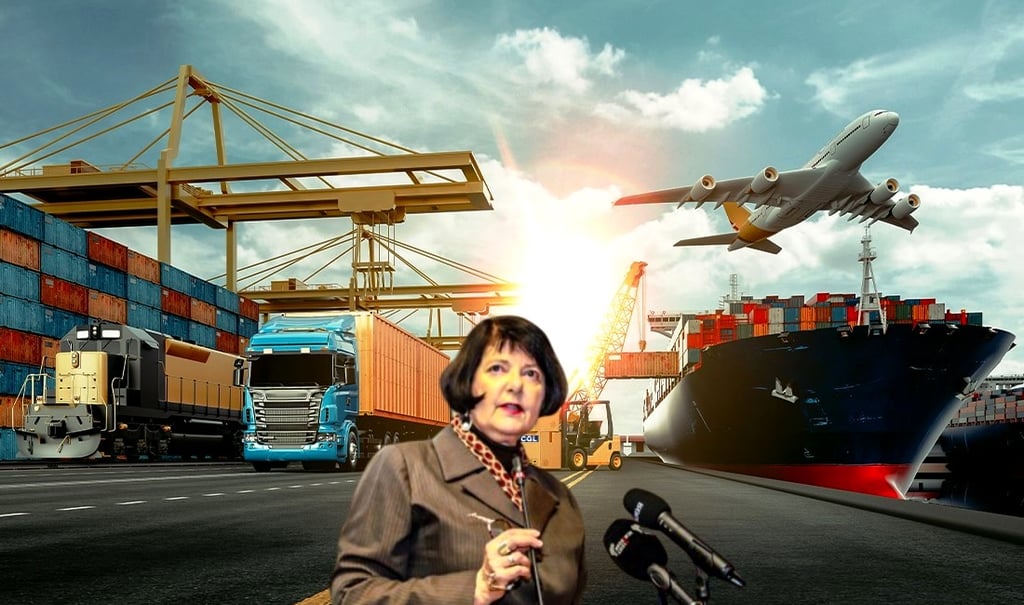Urgent Reforms Needed in South Africa’s Transport and Logistics Sector
Urgent reforms in South Africa’s transport sector aim to move 250M tons of freight via Transnet, handle 42M passengers & 1.2M tons of airfreight via Acsa, and achieve 600M Prasa journeys by 2030, boosting GDP and cutting road fatalities by 45% by 2029.
NATIONAL ROADS AND MAINTENANCEAVIATIONRAILWAY TRANSPORTATIONLOGISTICS
Patricia Jacobs
7/10/20253 min read


To achieve the ambitious target of transporting 250 million tons of freight on the Transnet network by 2029, Transport Minister Barbara Creecy has emphasized the urgent need for reforms to mitigate risks in both global and domestic environments. Speaking during her presentation of the 2025 Budget Vote, Creecy highlighted the critical role that efficient State-Owned Enterprises (SOEs) play in driving social and economic development in South Africa.Key Developments and Targets:
Transnet’s Freight Ambitions: The goal to handle 250 million tons of freight by 2029 underscores the need to revitalize Transnet’s rail network, which has faced challenges such as aging infrastructure, operational inefficiencies, and equipment shortages. Reforms will focus on modernizing rail systems, improving port efficiency, and fostering private-sector partnerships to enhance capacity. These efforts aim to reduce reliance on road transport, alleviate congestion, and lower logistics costs, which currently account for approximately 14% of South Africa’s GDP—higher than many peer economies.
Aviation and Acsa’s Economic Impact: The Department of Transport (DoT) projects that the Airports Company South Africa (Acsa) network will handle 42 million passengers and 1.2 million tons of airfreight annually by 2029. Acsa’s contribution to South Africa’s GDP is significant, with an estimated R21.7 billion in 2025, driven by its management of key airports like OR Tambo International and Cape Town International. Investments in airport infrastructure, such as terminal expansions and enhanced cargo facilities, are expected to support this growth, positioning South Africa as a regional aviation hub.
Road Safety and Fatalities: The DoT has set an ambitious target to reduce road fatalities by 45% by 2029, addressing South Africa’s high road accident rates, which claim approximately 12,000 lives annually. Initiatives include stricter enforcement of traffic regulations, upgrading road infrastructure, and promoting public awareness campaigns. The integration of technology, such as intelligent transport systems and real-time traffic monitoring, will also play a role in achieving this goal.
Prasa’s Passenger Rail Expansion: The Passenger Rail Agency of South Africa (Prasa) will receive a total transfer of R66.1 billion to support its modernization and expansion plans. By 2030, Prasa aims to facilitate 600 million passenger journeys per annum, a significant increase from current levels. This will involve rehabilitating rail corridors, deploying new rolling stock, and improving service reliability to encourage a shift from road to rail transport, particularly in urban areas like Gauteng, Cape Town, and Durban.
South African Airways (SAA) Economic Contribution: SAA is projected to contribute R32.6 billion to the economy by the 2029/2030 financial year. Following its emergence from business rescue in 2021, SAA is focusing on fleet modernization, route expansion, and operational efficiency to regain its position as a leading African carrier. Strategic partnerships, such as code-sharing agreements with global airlines, and investments in sustainable aviation practices are expected to drive this growth.
The transport and logistics sector is a cornerstone of South Africa’s economy, facilitating trade, job creation, and regional connectivity. However, persistent challenges such as underinvestment in infrastructure, corruption within SOEs, and inefficiencies in port and rail operations have hindered progress. For instance, Transnet’s port delays have been estimated to cost the economy billions annually, impacting key export sectors like mining and agriculture.To address these issues, Minister Creecy outlined plans to accelerate public-private partnerships, enhance governance within SOEs, and leverage technology to improve operational efficiency. The National Logistics Crisis Committee, established in 2023, continues to play a pivotal role in coordinating these reforms. Additionally, the DoT is exploring green initiatives, such as electrified rail systems and low-carbon aviation fuels, to align with global sustainability goals.
Achieving these ambitious targets requires bold reforms, strategic investments, and collaboration across government, private sector, and international partners. By addressing systemic inefficiencies and modernizing infrastructure, South Africa’s transport and logistics sector can unlock significant economic potential, reduce logistics costs, and improve quality of life for millions of citizens by 2029.
Future
© 2024. All rights reserved.
